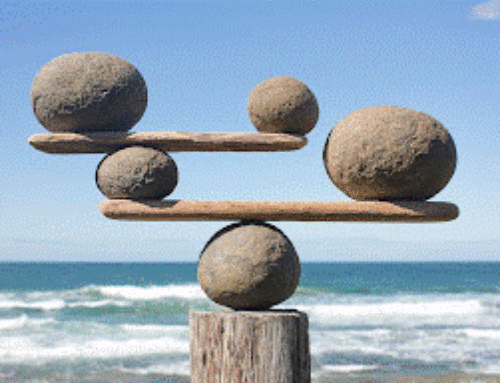I am fascinated with one question, what does it take to create exceptional performance ? What makes one team, one individual succeed in this and another not ? Having held the Guinness World Record for the Deepest dive by a Woman on Scuba for 16 odd years and knowing that I wasn’t borne with the skills to be the deepest, I had to learn them has cultivated this curiosity – in my mind if this is something I can learn then it is something anyone could learn (not necessarily to break a world record, that is a one off event, but imagine living a life where you knew, just knew that you can lean into any situation and succeed ? ).
Being an Agile Coach is the other reason I am endlessly fascinated by this question because for me agile is about how teams discover their ability to continuously deliver and to continuously get better at delivering until they almost accidentally fall into exceptional performance.
The pre-amble – 3 lenses that map out how successful you can be in delivering
That is the pre-amble to this post. There is a little more, so bear with me, because the devil is in the detail and there are some interesting perceptions of agile and delivery out there. The way I often use to be able to map where a team is and so what their next step may be, is to look at what they are doing through 3 lenses, people, process (and practice) and value (or purpose for those of you who like alliteration). One of the more vigorous debates inside our community is how People and Process fit together. I am of the school that they go hand in hand – people use process, if the processes are inefficient and clunky it adds more effort and drag and difficulty to delivering. If the people are not able to understand and use the processes then it doesn’t matter how good or effective the processes are, you will get what you always got. Creating a powerful delivery engine is about balancing these 3 aspects and at any one time any one of those could be the thing that is having the biggest impact on your delivery.
Its people AND process… people use processes and the effectiveness of a process depends on how the people use it as well as the process itself – it isn’t an either or!
Which leads me rather slowly into culture and how people use processes. One of the earliest learnings I had as an agile coach was in a large (4000 plus) S.A.F.E, big bang implementation. On the Friday we were doing it the old way, on the Monday 4000 people were doing it a new way. In the scramble to embed Release Trains and squads some of the coaches started to notice how the new processes were delivering similar results and when we started to pay attention we noticed that people were using the new processes and practices in the same way they had used the old. How people process their world, how they choose their reactions and actions and how they make decisions was overriding the potential of the new processes.
Long story short, we started to embed a behaviour, culture workshop that created an awareness of the mental models people used and in particular, how unilateral control creates the universal experience of most corporates and what an agile mindset actually involves. Which brings me to blame.
Signs of a power based, telling culture – and how blame entrenches itself
There are some really obvious signs of a culture that isn’t going to easily shift into collaboration with autonomous teams that are driven by capacity and an obsession with delivering value (and not what the most powerful person the room wants). People doing what they are told, leaders who expect to be obeyed and inside teams an overwhelm where they are constantly trying to balance conflicting priorities and keep important people happy. These are the teams and cultures where the phrase psychological safety is frequently heard – people are quiet, they don’t volunteer information and if you listen there are a lot of conversations that revolve around people, not the ball, but the player. The name of the game is to win (and if you can’t win, avoid loosing). These are the cultures where it is critical to be right and the heroes and important people spend lots of time in rational arguments to tell people why they are right.
Enter Blame – stage right
This is where blame comes in. In cultures where people feel unheard, invisible, unappreciated and essentially powerless there is no hope to be right. Blame is a way to feel like you are doing something to change things. It is a way to speak to the people around you that supports the rule that you can’t just complain, you need to provide an answer…and when the problem is complicated and big and embedded into a system of processes and governance and power, then thing that pops out and is most visible is the people.
How we behave is something we choose and not chosen for us by the culture we are in ….
There is another part to this all that I seldom here people talk about and so are perhaps not aware of – how people behave is dependant on the culture you are in. When I do my 3 day workshops that allow people to see themselves in action and see for themselves which mental models they use, this idea that your behaviour isn’t actually a choice, is often one that is strongly resisted (until they see it for themselves). So if you are in a culture where blame is prevalent not talking about the people and how they are to blame for the experience you are having makes you the odd one out and so the target of yes, blame.
Blame is a way of acting and so being responsible and accountable ….. not
There is no easy way out of the blame trap. People create their own experiences – it is why we have imaginations, so we can think up new experiences. The problem is that we don’t know that we create our own experiences and that who we are and what we do has impact and power. We think that our power is given to us by our position on the ladder and so instead of shifting into creation of a new reality and experience, we focus on what isn’t working, on blaming people and on removing that. You can’t however create a negative. The moment you take something out it creates a gap and if you don’t fillt hat gap with something else, it will be filled with what was always there. That is how creation works. To create a new experience you need to be able to hold two opposing realities in your mind at the same time. You need to be able to see the situation you are in and what isn’t working and how the people around you may (or may not) be contributing AND you need to be able to see what it would be like if it were different. Then the actions that you take are choices that continuously support that new outcome and so you starve the old outcome.
Blaming is a weird way of creating – the more we focus on the people and changing the people the less likely we are to see any other way of getting out of the experience we are in and the more focused and adamant and even confrontational we will be about having to change that person – they are the problem.
You see this in other ways in organisations – when a process doesn’t get the expected results it isn’t because the process is perhaps not fit for purpose, it is because the people aren’t doing it properly, we implement more oversight, more training and so disempower our people more.
Now add in what makes an agile process work – people who are able to and excited to examine what is happening and what is working without blaming anyone, people who want to and are able to learn and so adapt and continuously do so, people who think for themselves within the guard rails that their leadership provide, a culture that fundamentally knows that what is understands and knows to be true today is almost definitely going to be different tomorrow as it learns and grows and slowly gets better at what it does.
How do you change this ?
Knowing about something is useless unless you also know how to transform it. There is a simple 3 step way of shifting this for teams.
- Connect people to their experience.
- Connect people to their ability to change their experience
- Connect them to a clear vsion of what they actually want.
Step 1 – Connecting people to their experience. If you ask people who their day is there is a good chance they can’t tell you accurately. How they are feeling and their memory of their experience is often clouded by a single event – the cup of coffee was amazing overall except for the bitter last sip.
By asking people to put a number on their experience (scale of 1 – 10) and by asking people to add in a leading and lagging edge to this, enables people to really start to see the variation of experience they are having and often, people will shift out of thinking they are having a consistent 3 out of 10 experience and start to talk about, mostly a 7 with random 3’s and some 9’s.
Step 2 – Connect people to their ability to change their experience. This is more difficult as we tend to believe there is nothing we can , especially inside a corporate. One way that I have used regularly is to get it all written down so people can really see it. We think we know, but we don’t really when it is inside our heads. When it is written down (yes on stickies), we can start to see patterns, we can start to see how we may be experiencing particular people and we can start to see how others may be in the same situation with a different experience, which allows us to start asking – what is it that they are thinking/ seeing/ observing that is giving them a different experience.
Step 3 – which brings us to the all important third step, understanding what a 8 or higher experience is. When I first start asking people this they often can’t tell me, and when I ask what they can do differently to create that then things tend to get quite quiet (or noisy as they tell me why it is impossible). This is the part where people start to connect to their power and ability to create their own experience. It enables them to stop engaging in conversations that seem to be connected to the result they want to avoid and instead think about what they could be saying or doing to get a different result. This is also the part where people start to connect to the impact of blaming because everyone has been blamed before.
From the violence of blame to the gentleness of co-creation
It all starts with just becoming aware of how you describe your world. We have all been blamed and so know what it feels like. One way of looking at Blaming is that it is itself a form of violence. When we blame someone, we are judge, jury and executioner. When we blame someone, we are fundamentally saying that person is not worthy, has no value and that is often received as a statement of their right to have a place in the world. Yes! It does go that deep.
Seldom do people wake up and decide to be an asshole or to make your day a misery or to mess up. Most of us wake up every day hoping that today will be filled with ease and laughter and that feeling of being a valued contributor. The real question is, how are you supporting that experience for others and how much of your experience is dependant on others changing.
What happens when you stop blaming and start owning being the creator of your own experience ?
How Blame stopped me from a World Record
As I got to this point in an already long post I found myself remembering how blame almost stopped me from becoming the Deepest. I spent a good few years stuck because a fellow diver just wouldn’t dive with me and so support my vision. It was all his fault and I was vociferous and passionate about the injustice of it all. I believed it whole heartedly. Which all changed when I somehow realised that nothing was changing (other than me, I was getting more miserable and resentful and hard to be around). So I made the New Years resolution that changed everything – I had to do whatever it took to get just 1 meter deeper…and instead of going from 121 meters to 122, I found myself with the second deepest dive of 186 meters in November of that year.
I stopped blaming and started shifting into doing for myself. I started living accountability, true accountability – the type where it isn’t all your fault and you don’t have to wait on others. But that is another blog.




